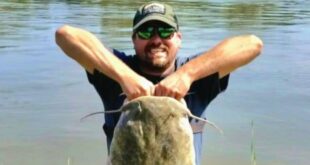American flamingos are iconic in Florida, but have been nearly extinct there for decades
Jerry Lorenz was beyond excited to feast his eyes upon a flamboyance of flamingos in Florida.
The bright pink birds may be an iconic symbol of the sunshine state, but the vast majority residing there these days are plastic lawn ornaments.
So when Lorenz, the state research director for Audubon Florida, peeped 16 of them through his binoculars at Florida's Everglades National Park on Wednesday night, it was pretty special — even if they were driven there by a hurricane.
"They were basically hunted to extinction in Florida from the 1880s, early 1900s, and we have never had, since then, a resident population," Lorenz, the state research director for he conservation group Audubon Florida, told As It Happens host Nil Köksal.
"Very excited to see flamingos back in this area where there used to be thousands of them."
'Spread pretty much all over'
And Lorenz isn't the only bird lover excited to spot the gangly creatures in recent weeks.
Jacob Roalef of Birding Ecotours recently snapped a photo of flamingos bathing at the Caesar Creek State Park in Ohio.
He told CBC that local birdwatcher George Keller first reported the sighting on a Facebook group for rare birds in the state.
"As soon as I saw that, I gathered my gear and rushed out the door," Roalef said in an email.
"I have been birding in Ohio for nearly 10 years now and it is always a rush to see something very rare, but these Flamingos felt extra special. It was exhilarating and an exciting hour or so from the time of learning about the birds' presence to then spending some time watching these incredible birds."

Lorenz says flamingos nest in Mexico, Cuba and Turks & Caico, and were likely blown off course by Idalia's powerful winds in late August.
"As the storm broke up, they were, you know, spread pretty much all over the southeastern United States," he said.
It's not clear exactly how many of them made the unplanned trip across the border, but he estimates there are at least 100.
"I can't even enumerate at this point," Lorenz said. "We have gotten reports from Kentucky, Tennessee, I believe, Alabama, North Carolina, South Carolina and Georgia. But most of them are in Florida."
Being blown off course by a hurricane is probably a traumatic experience, Lorenz says. Nevertheless, he isn't too worried about the long term well-being of these unexpected transplants.
"These birds, they're quite capable of sustained flight. They prove that getting here. And so as the temperature drops, or even just because they feel like it, they'll start moving south again," he said.
"I can't think like a bird, but I think they know exactly where they are."
Flamingos need their space
Still, he cautions curious onlookers to keep a respectful distance of at least 60 metres.
"These birds have gone through a very stressful ordeal," he said. "They do not need to be disturbed. If you're close enough that the bird is looking at you and responding to what you're doing, you're too close."
The consequences of spooking them, he says, could be deadly for the already exhausted creatures.
"Since birds have to be lightweight, they don't store fat like we do. And because they don't store fat, they have to make up that energy as they go," he said. "So if you make them fly from an area that means that they have to find food to replace what it takes to fly. And it takes a lot of energy for those big birds to fly."
Already, he knows of two cases of flamingos turning up dead, and one that was injured and taken to a wildlife rehabilitation facility.
Hello fancy hats, goodbye flamingos
According to the Florida Fish and Wildlife Conservation Commission (FFWCC), American Flamingos are native to the state, but all but disappeared by the turn of the 20th century.
Lorenz says they were hunted to near-extinction during the 19th century plume trade, when it was considered posh to sport exotic feathers on a helmet or a hat.
Today, American flamingos are mostly distributed across the Caribbean, and Florida's flamingos make up less than one per cent of the global population of about 260,000-330,000 mature individuals, the FFWCC said.
There have been more and more flamingo sightings in Florida in recent years, Lorenz said, though they're mostly transient, and it's hard to say how many are, in fact, escapees from zoos and other animal attractions.
Still, every new sighting gives him hope.
"I think that they will probably head back to where they're familiar with. But as the years go on, we do get more and more bigger and bigger flocks that come to Florida," he said.
"They might stay a day or two or they might stay several months. And I think eventually we will have a resident population."

Add some “good” to your morning and evening.
A variety of newsletters you'll love, delivered straight to you.
*****
Credit belongs to : www.cbc.ca
 MaharlikaNews | Canada Leading Online Filipino Newspaper Portal The No. 1 most engaged information website for Filipino – Canadian in Canada. MaharlikaNews.com received almost a quarter a million visitors in 2020.
MaharlikaNews | Canada Leading Online Filipino Newspaper Portal The No. 1 most engaged information website for Filipino – Canadian in Canada. MaharlikaNews.com received almost a quarter a million visitors in 2020.







